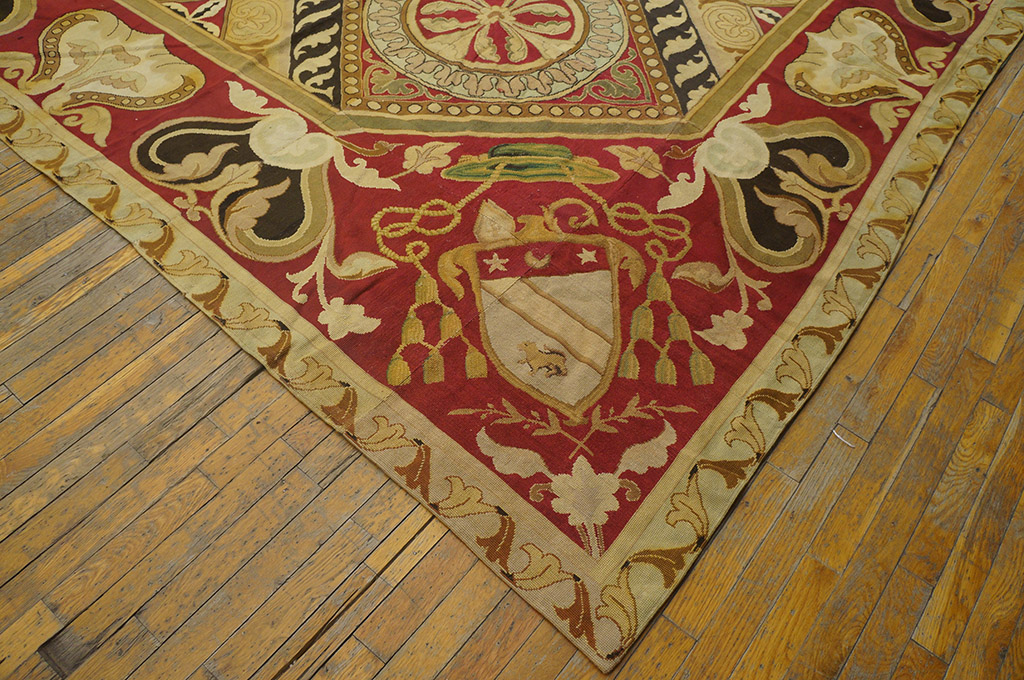#20230
Needlepoint Square Carpet
France
17’6” by 19’6”
circa 1870
Cotton foundation, wool needlepoint embroidery
This mosaic floor pattern wool needlepoint carpet was clearly a special commission for a high-level Roman Catholic ecclesiastic, bishop and then archbishop / cardinal as indicated by the hats with tassels in the corners. Each of these corners surmount a shield of arms, one of which displays the cross, another with a wreath bearing the inscription ‘pax’ or ‘peace’, and the other two more distinctly armorial, probably indicating the cleric’s family name. The more tassels, the higher level the churchman. Monsignors have the fewest tassels, archbishops at the cardinal level the most. The archbishop/cardinal’s arms show a double-armed Cross of Lorraine surmounting a shield with a bend. Another armorial shield shows a bend with a small lion beneath, and at the top an azure band with star and crescent ornamentation. The Lorraine Cross may (or may not) indicate service in the capital city of Nancy. Regardless, the original patron should, with further research, be identifiable. The shields indicate a patron of noble birth, as was the usual practice in the Catholic Church in France and Italy in the 19th century. It was probably woven for a large reception room in the archiepiscopal palace of an important French city.












The pattern is a four-column row alternation of broad slate lozenges and narrow red dotted lozenges – the former with small, flowing detached leaf patterns. The enclosed motives are either acanthus fringed circles with leafy crossed petals within smaller circles, or small diamonds with slender marigold leaf extensions. There are small heart-shaped ivy leaf extenders at four points of the circles. The field corners are beveled to accommodate the hats and shields. The deep oxblood border shows an alternation of heart-shaped acanthus volutes, some with dark brown filling, some border-toned, with different cordiform motives with dot décor and lily filling. The whole look is very 19th century and there is only the very slightest Arts and Crafts (or the French equivalent) influence in the border. The other secondary hues include straw, sand, green, red, and brown. The drawing is flat and two-dimensional except for the corner hats.
Attribution to a known manufacturer is impossible at present, but it may have been woven by any of the several firms active in Tournai at the time.
To view this rug on our website, click here.

